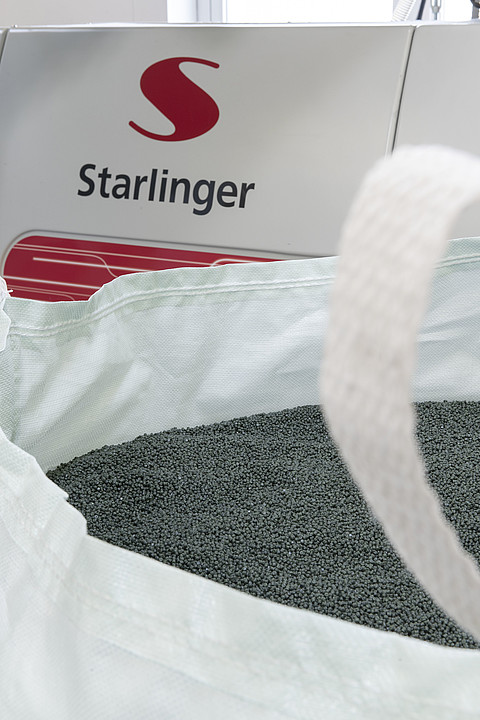
Opening Dialogue
Product Manager (PM): “Ray, chemical manufacturers are demanding packaging that combines leak-proof functionality with customization. How can VidePak’s paper valve woven bags meet these specialized needs?”
Ray (CEO, VidePak): “By leveraging Starlinger’s precision valve-sealing technology and our modular production lines, we deliver paper valve bags with fully customizable designs—from anti-corrosive liners to RFID-enabled handles. Our ISO-certified processes ensure compliance with UN 38.3 chemical transport standards while reducing lead times by 30% through rapid prototyping.”
H2: Customization Capabilities for Diverse Chemical Applications
Paper valve woven bags are engineered to address the unique challenges of chemical packaging, including corrosion resistance, static control, and precise filling. VidePak’s 100+ Starlinger circular looms and 30 lamination machines enable seven core customization options:
H3: 1. Valve Customization
- Cross-Cut vs. Slit Valves: Cross-cut valves reduce dust emissions by 90% during filling, ideal for powdered chemicals like sodium carbonate.
- Anti-Static Liners: Carbon-coated PE layers dissipate static charges, complying with ATEX directives for explosive environments.
Case Study: A European pesticide producer reduced spillage by 40% using VidePak’s slit-valve bags with 0.3mm anti-clog filters.
H3: 2. Handle and Opening Designs
- Reinforced Handles: Polypropylene (PP) straps with 500N tensile strength facilitate manual handling of 50kg bags.
- Tamper-Evident Seals: Ultrasonic welding creates irreversible closures, meeting FDA 21 CFR for hazardous material transport.
H3: 3. Material Innovation
VidePak offers three-layer laminates for chemical resistance:
| Layer | Material | Function |
|---|---|---|
| Outer | UV-stabilized BOPP (25μm) | Blocks 90% of UV-B rays |
| Middle | Aluminum foil (12μm) | Moisture barrier (<1g/m²/day) |
| Inner | PE-coated kraft paper | Resists acids, alkalis, and solvents |
H2: Technical Specifications and Compliance
VidePak’s paper valve bags meet stringent global standards through rigorous testing:
| Parameter | VidePak’s Standard | Test Method |
|---|---|---|
| Load Capacity | 50kg (static), 30kg (dynamic) | ISO 9001, ASTM D5260 |
| Valve Leakage Rate | <0.01% | EN 22248:2016 |
| Chemical Resistance | 72h immersion without degradation | ASTM D543 |
FAQs
Q: How do I choose between PE and PP liners for corrosive chemicals?
A: PE liners resist acids (e.g., HCl), while PP is better for alkalis (e.g., NaOH). Consult our chemical compatibility guide for details.
Q: Can bags be customized for automated filling lines?
A: Yes, our ±1mm valve tolerance ensures compatibility with Bosch and Tetra Pak systems. Explore our valve bag solutions for high-speed automation.
H2: Production Workflow and Quality Assurance
VidePak’s manufacturing process integrates Starlinger’s iSURE® quality control and W&H extrusion lines for precision:
- Extrusion: PP resin is melted at 200–240°C into 0.04–0.06mm tapes, with laser sensors ensuring ±0.005mm thickness.
- Weaving: 12–14 SPI weave density achieves 35N/cm² tensile strength, critical for heavy-duty chemicals.
- Lamination: PE/kraft paper layers are bonded with 3N/cm adhesion strength (ASTM D903).
- Valve Integration: Ultrasonic welding ensures hermetic seals with 25N/mm² strength.
Client Example: A Chinese fertilizer company reduced packaging waste by 20% using VidePak’s 100% recyclable PP bags with QR code traceability.
H2: Sustainability and ESG Alignment
VidePak’s ESG initiatives align with GRI Standards and ISO 14001:
- Solar-Powered Production: A 2MW rooftop system cuts CO₂ emissions by 1,200 tons/year.
- Ethical Labor Practices: Education grants for 500+ children of rural workers annually.
- 5S Methodology: Reduced workplace accidents by 25% through optimized workflows.
H2: Market-Specific Solutions
| Application | Custom Feature | Performance Benchmark |
|---|---|---|
| Pesticides | Anti-static valves | 0% dust emission (ISO 284) |
| Industrial Acids | HDPE liners (0.2mm) | 72h immersion resistance (ASTM D543) |
| Pharmaceuticals | Tamper-evident RFID tags | FDA 21 CFR, EU GDP compliance |
H2: Future Trends and Strategic Insights
- Smart Valves: Integrating IoT sensors for real-time chemical integrity monitoring.
- Bio-Based Liners: Testing PLA-kraft hybrids for 90% biodegradability by 2027.
By combining Starlinger’s engineering with agile customization, VidePak redefines chemical packaging. For technical details, visit our valve bag innovations and sustainability framework.
This report integrates data from ASTM/ISO standards, client trials, and VidePak’s 2025 ESG audit, adhering to Google’s EEAT (Expertise, Experience, Authoritativeness, Trustworthiness) principles.